
by admin | Dec 29, 2020 | Stem Cell Therapy, Osteoarthritis, Pain Management, Stem Cell Research
As researchers continue to uncover potential health and medical benefits associated with the regenerative properties of stem cells, there is growing interest in the field of stem cell medicine and specifically for use as an alternative therapeutic treatment of pain.
Of particular recent interest in this area is the differentiation ability of stem cells classified as totipotent, pluripotent, and multipotent. Stem cells that can differentiate into and form cells and build organs are known as totipotent stem cells. Pluripotent stem cells are able to differentiate into various types of cells. Multipotent stem cells can differentiate into several limited forms of cells. Of the three different types, only multipotent stem cells are found as adult cells in the body, including in organs, placenta, and bone marrow.
Recently, stem cell transplantation has been used as an alternative treatment for pain associated with severe osteoarthritis, neuropathic pain, and intractable musculoskeletal pain that does not respond to traditional or conventional medication.
Osteoarthritis
Although stem cells are thought to be a potential treatment approach for repairing and regrowing cartilage required for treating severe osteoarthritis, to date, regeneration of damaged cartilage has proven to produce limited results. One of the significant issues associated with using stem cells to regenerate cartilage is that cartilage contains no blood vessels or nerves, making cartilage regenerations very difficult once it is damaged. Making the process even more difficult, cartilage regeneration can only occur when the entire layer of cartilage and the layer of bone directly below the cartilage is damaged.
As such, therapeutic stem cell treatment possibilities for osteoarthritis include individual or combination treatment(s) of surgical intervention, tissue engineering, and intra-articulation injection of cultured stem cells; of these possible treatment options, intra-articulation injection of cultured cell therapy would be the preferred method as it is the least minimally invasive and most convenient for clinical use.
There have been mixed reviews as to the effectiveness of these treatments and, to date, there have been no reliable and convincing clinical human students with a high level of evidence conducted specifically on the efficacy in functional improvements and cartilage repair surrounding the application of intra-articular stem cell injection therapy. Although some who have had this treatment expressed improvements.
Neuropathic Pain
Stem cells have demonstrated the ability to release neurotrophic factors that enhance the growth and survival potential of neurons, secrete anti-neuroinflammatory cytokines, and provides a cellular source for replacing injured neural cells; this makes the application of stem cells a prime option for regulating and potentially even reversing intractable neuropathic pain.
Studies have confirmed that relieving neuropathic pain is possible through the administering of stem cells, both through intravenous injection and when directly administered to a specific injured site. However, while stem cells do not need to make direct contact with injured cells to produce a neuroprotective effect, stem cells applied directly to an injured site, as opposed to those intravenously injected appeared to better target and relieve neuropathic pain associated with a specific area.
In addition, while a further clinical human study is required, animal models of both diabetic neuropathic pain and spinal cord injury demonstrate that stem cell therapy, and specifically mesenchymal stem cells (MSCs), demonstrated improved blood circulation and nerve conduction velocity, reduced pain, and regeneration of the affected nerve.
Intervertebral Disc Disease
Patients diagnosed with degenerative disc disease who were treated with MSCs injected directly into the nucleus pulposus, or inner core of the vertebral disc demonstrated a reduction in pain and disability comparable to spinal fusion surgery.
Research has yet to identify an adequate, effective dosage of stem cells and further research on specific stem cell type, dosage, safety, and implantation rate is required. As research into the use of stem cell therapy in pain medicine progresses, it is important to see the development of evidence-based standardized methods of treatment.
While still in the early stage of clinical application, the use of stem cells in the treatment of pain appears to be very promising.
Reference: (2019, October 1). Stem cell therapy in pain medicine – PubMed. Retrieved December 11, 2020, from https://pubmed.ncbi.nlm.nih.gov/31569916/

by admin | Dec 26, 2020 | Multiple Sclerosis, Mesenchymal Stem Cells, Stem Cell Research, Stem Cell Therapy
A recent open-label, single-arm, phase 1 clinical trial designed to evaluate the safety and tolerability of repeated intrathecal (IT) administration of autologous mesenchymal stem cells (MSCs) from bone marrow in patients with progressive multiple sclerosis demonstrated findings and benefits resulting in the initiation of an FDA-approved randomized, placebo-controlled and blinded phase II large group study to demine further efficacy of this procedure.
Multiple sclerosis, or MS, is a progressive condition where the body’s immune system attacks myelin, the protective sheath covering the nerves of the central nervous system, resulting in debilitating communication problems between the brain and the rest of the body.
While the specific cause of MS has yet to be determined, the disease itself is characterized by specific areas of inflammatory CNS demyelination that either regenerates or progresses into a chronic condition with accompanying loss of neurons, neuroglial cells, and glial scarring.
Roughly 10% to 15% of MS patients experience progressive symptoms from the onset of the disease, including motor weakness, paralysis, sensory dysfunction, loss of coordination, and cognitive decline.
Although there are immunosuppressive and immunomodulatory therapies that serve to slow the progression of MS, therapeutics designed to protect, repair, or regenerate neural tissue as a way of restoring neurological function do not currently exist. Considering that, mesenchymal stem cells gathered from bone marrow have demonstrated the ability to promote tissue repair through the secretion of paracrine factors.
Study Design and Findings
The treatment phase of this phase 1 trial, conducted at Tisch MS Research Center of New York, involved select participants with progressive MS receiving three separate IT injections of autologous mesenchymal stem cell-defined neural progenitors (MSC-NPs) spaced three months apart; each participant was then assessed the day of treatment, then the day, week, and month following each administration. As part of the post-treatment assessment, participants were assessed again three and six-month after receiving the third dose.
Analyzing the results of this study, researchers found no serious adverse effects or hospitalizations associated with this IT MSC-NP treatment; this included no specific incidents of chemical or infectious meningitis.
Brain MRI scans gathered during the course of this study demonstrated no changes and specifically were characterized by the absence of new or additional T2 lesions or related progressions associated with the patient’s MS. These findings led researchers to conclude that multiple IT administrations of MSC-NP’s are safe in the short-term and well-tolerated in participants with progressive MS.
Over the course of the study, all participants were strictly monitored for changes associated with clinical status. Assessment information gathered at the three and six-month post-treatment marks demonstrated that 75% of the subjects in this study demonstrated specific neurological improvement associated with this IT MSC-NP treatment when compared to established benchmarks, including neurological improvement associate with:
- Expanded disability status scale (EDSS)
- Timed 25-ft walk (T25FW)
- MRC muscle strength scale
- Bladder function
Key findings and observations contributing to this study include previous studies of experimental autoimmune encephalomyelitis (EAE) animal models of MS led to the experimental design of this study including multiple dosing of MSC-NPs (as opposed to single dosing).
When constructing this research study, researchers also determined that the intrathecal route of administration for cell delivery was important. While previous research has demonstrated administering bone marrow MSCs intravenously has proven to suppress EAE through immune response, intravenous administration has not demonstrated to cross the blood-brain barrier in amounts sufficient to directly impact and/or benefit the CNS; the IT route of administration appears to maximize the therapeutic potential to benefit the CNS and spinal cord.
This study concluded that IT therapy with MSC-NPS is safe and well-tolerated in patients with progressive MS and demonstrated a number of neurological benefits. As a result of this phase 1 trial, an initiation of FDA-approved randomized, placebo-controlled, and blinded phase II study in a larger group study to better determine efficacy in patients with progressive MS.
Reference: (n.d.). Phase I Trial of Intrathecal Mesenchymal Stem Cell-derived …. Retrieved January 19, 2021, from https://www.sciencedirect.com/science/article/pii/S2352396418300513

by admin | Dec 17, 2020 | Bone Marrow, Mesenchymal Stem Cells, Stem Cell Research, Stem Cell Therapy
The ability for bone to naturally repair fractures and other common injuries have been well documented. However, research has consistently demonstrated that as they age, bone loses its ability to heal, repair, and fend off various bone diseases. In fact, each year, in the U.S. alone, there are over 2 million fragility-associated fractures with associated healthcare costs exceeding more than $20 billion dollars.
Currently, non-stem cell bone healing therapies including estrogen and related agonists, recombinant parathyroid hormone, supplements such as vitamin D and calcium exist, but with limitations and a number of potentially serious side effects.
Considering that the incidence of fracture and the associate rate of morbidity increase with age, current research is now examining other therapeutic options for the structural and functional restoration of bone, including the viability and of tissue engineering applications such as mesenchymal stem cells (MSCs) and bioscaffolding as potential solutions for the structural and functional restoration of bone.
Stem cells are generally used therapeutically in three distinct ways, including 1.) freshly isolated stem cells transplanted directly into tissue and undergo in vivo differentiation to become a desired cell type; 2.) the stem cell can be manipulated in vitro prior to being implanted; or 3.) circulating endogenous stem cells are recruited by cytokines to facilitate cell proliferation, migration, adhesion, and differentiation.
As researchers continue to explore using MSCs as part of therapeutic bone regeneration, it is generally accepted that MSC bone marrow density and quality decrease with age. In addition, a factor in determining the effectiveness of MSCs related to facilitating tissue repair is the ability for the stem cells to be directed to the site of injury, a process more commonly known as “homing”. A recent study using mice has demonstrated that MSCs appear to lose their homing ability rapidly while young MSCs demonstrate better homing ability, especially when compared to old MSCs. Considering this, future research must consider the age of both donor and recipient when determining the effectiveness of this strategy.
In addition to stem cells, bioscaffolds are also considered an essential component of the bone regeneration strategy, serving as the reservoir for multiple factors, the carrier for cells, the filler for the void space, and the template for bone regeneration. The ideal scaffold for bone tissue engineering has been identified as:
- Showing no local and systemic toxic effects to the host tissue
- Supporting normal cellular activity
- Allowing cell adhesion, proliferation, extracellular matrix deposition, and inducting new bone formation
- Prompting the formation of blood vessels after weeks of implantation.
Considering the above, several substrates have been identified as potential bioscaffolds to support improved regeneration of bone tissue, including decellularized extracellular matrix scaffolds, synthetic scaffolds (calcium phosphate-based bioactive ceramic scaffolds; metallic scaffolds (including metal scaffolds coated with growth factors and other bioactive factors); hybrid scaffolds combining two or more materials (metal-ceramic-poly hybrid scaffolds); natural and synthetic polymeric scaffolds; and nanomaterial-based scaffolds.
As research continues to explore the possibilities of new therapeutic approaches to bone healing provided through various tissue engineering applications, the use of MSCs and bioscaffolds continue to demonstrate potential benefits. Among the key areas requiring further study is the need to develop vascularization in engineered bone material. Bone and bone tissue has a rich vascular supply; while the recent study has demonstrated nanomaterials as having the potential to promote vascularization (without the aid of growth factors), further research and clinical trial are required.
Reference: (2018, June 22). Bone Marrow Mesenchymal Stem Cells: Aging … – NCBI – NIH. Retrieved December 18, 2020, from https://www.ncbi.nlm.nih.gov/pmc/articles/PMC6733253/

by admin | Dec 3, 2020 | Exosomes, Mesenchymal Stem Cells, Stem Cell Research, Stem Cell Therapy, Stroke
Promising early research shows that when introduced into a brain injured by stroke, extracellular vesicles (EVs), also known as exosomes, a bioactive substance secreted by mesenchymal stem cells, have been associated with improved blood vessels creation, increased formation of neurons, and enhanced preservation of the neurological structure; these findings demonstrate a promising stem cell-derived stroke therapy that serves as an alternative approach to current stem cell infusion treatment options.
With nearly 14 million people suffering strokes each year, strokes continue to be the leading cause of physical disability among adults; between 25 percent and 50 percent of stroke survivors are left with significant and debilitating disabilities.
Because mesenchymal stem cells, or MSCs, secrete extracellular vesicles thought to reduce inflammation, enhance autophagy, and promote regeneration of damaged cells, researchers evaluating potential regenerative strategies for stroke-induced neurologic deficits have identified these MSC-derived EVs as a viable option for stroke therapy.
Although the reported beneficial effects of EV therapy has been observed in studies completed on animals, there is an increasing number of clinical studies currently being conducted on humans that suggest MSC EV stem cell therapy is a potentially safe and effective therapeutic option to improve outcomes in several various human applications.
Specifically, this EV-mediated therapy appears to offer an off-the-shelf treatment option that is potentially effective in crossing the blood-brain-barrier (BBB) while also avoiding cell-related problems, including the formation of tumors and infarcts resulting from vascular occlusions, or blood clots, consistent with those observed in acute ischemic stroke.
While there appears to be a promising upside to MSC EV therapy for the treatment of stroke, studies are on-going to discover the optimal therapeutic treatment of stroke patients. Some areas to continue researching are the optimal time and best mode of application of EVs in stroke patients (most stroke-related recovery occurs in the first few months following the stroke).
As research continues into the effectiveness of MSC-EV therapy for stroke, early indications are that EVs derived from mesenchymal stem cells could be a viable cell-free treatment option for patients recovering from a severe stroke.
Source: (2019, March 12). Mesenchymal Stem Cell-Derived Extracellular Vesicle …. Retrieved December 4, 2020, from https://www.ncbi.nlm.nih.gov/pmc/articles/PMC6422999/

by admin | Nov 7, 2020 | Osteoarthritis, Mesenchymal Stem Cells, Stem Cell Research, Stem Cell Therapy
Osteoarthritis is the most common form of arthritis. In osteoarthritis, the cartilage of the joints breaks down, bone spurs form, the synovial linings become inflamed, and the ligaments around the joint calcify. All of these pathological changes combine to cause joint pain, swelling, and stiffness. The breakdown of the joint also means that it does not function properly. The arthritic joint may “lock up,” “give out,” or simply not be able to move through its normal range of motion. Early in the disease, the pain of osteoarthritis may be brought on by movement. Later, the pain is more or less constant with severe pain flares.
Initially, the treatment for osteoarthritis is pain medications, exercise, braces, and physical therapy. Joint injections may be helpful for 4 to 6 weeks, but recent research suggests that repeated steroid injections may break down cartilage and speed up joint destruction. Unlike treatments for rheumatoid arthritis, there are no disease-modifying treatments for osteoarthritis. The disease tends to get worse over time until surgery is required. Joint replacement surgery is usually the treatment of last resort.
Since osteoarthritis is a degenerative joint disease, a reasonable approach to therapy is to try to rebuild or regenerate the joint tissues. This would not only stop the disease progression of osteoarthritis but perhaps even heal the damaged joint. For this reason, regenerative medicine, also known as stem cell therapy, is drawing the attention of many scientists who are looking for alternative therapeutic treatments for osteoarthritis.
Researchers tested the ability of mesenchymal stem cells to relieve pain and treat the damage of osteoarthritis. More specifically, they used the exosomes that the mesenchymal stem cells produce. Exosomes are tiny packets of substances like RNA and peptides that support tissue growth and repair. Exosomes contain most of the molecules that make mesenchymal stem cells helpful.
The scientists found that giving exosomes from mesenchymal stem cells to animal subjects with experimental osteoarthritis had some remarkable effects. Not only did the stem cell-derived treatment substantially reduce pain in the rats with osteoarthritis, but microscopic and molecular evidence also showed that the exosomes were able to repair cartilage in the affected joints. This is truly impressive when you consider that other treatments for osteoarthritis only reduce symptoms—they do not repair cartilage or stop the progression of the disease.
While this work will need to be replicated in human clinical studies (and that work has already begun), this is an exciting finding for the millions of Americans who struggle with osteoarthritis.
Reference: He, L., He, T., Xing, J. et al. Bone marrow mesenchymal stem cell-derived exosomes protect cartilage damage and relieve knee osteoarthritis pain in a rat model of osteoarthritis. Stem Cell Res Ther 11, 276 (2020). https://doi.org/10.1186/s13287-020-01781-w

by admin | Oct 30, 2020 | COPD, Stem Cell Research, Stem Cell Therapy
Chronic obstructive pulmonary disease (COPD) is a lung condition that makes it hard for patients to breathe. In COPD, small airways in the lungs thicken and lose their elasticity. People with COPD have shortness of breath, especially during physical activity. Patients with severe COPD may experience a more challenging quality of life. COPD patients may experience several exacerbations a year which require a stay in the hospital.
Patients with COPD typically need one or more inhalers a day. These inhalers help to open airways and, in some cases, decrease lung inflammation. Patients who also have bronchiectasis may need to take an oral antibiotic every day. During a COPD exacerbation, patients usually must receive powerful steroid treatments intravenously, routine breathing treatments, and supplemental oxygen.
People with COPD are more prone to lung infections, and so they usually receive IV antibiotics for pneumonia. Those who successfully stop smoking can help to prevent further lung damage, however, the inflammation and lung damage persists for a long time. Today, patients are seeking alternative therapies for COPD. Many are discovering regenerative medicine, also known as stem cell therapy, that may offer an incredibly promising therapy for COPD.
The lungs have a large number of naturally occurring stem cells that can restore function. For example, mice who lose half their lung capacity from experimental COPD survive, and natural stem cells within the lungs can restore their lungs to a natural state within 5 months. Unfortunately, humans with COPD cannot repair their lungs as quickly and as fully as mice can. This is why researchers are studying the use of stem cell treatment to restore lung function in patients with COPD.
Studies have shown that stem cells have the potential to help improve lung function. Stem cell treatment improved oxygen and carbon dioxide exchange, exercise tolerance, and cell injury in early studies.
One review did show that stem cell treatment is “safe and may improve patients’ condition and quality of life; however, larger-scale studies are needed to evaluate efficacy.” More research in humans is needed, but the pre-clinical (aka animal and laboratory) research in this area is quite promising.
Reference: Kokturk N, Yıldırım F, Gülhan PY, Oh YM. Stem cell therapy in chronic obstructive pulmonary disease. How far is it to the clinic?. Am J Stem Cells. 2018;7(3):56-71. Published 2018 Aug 1.


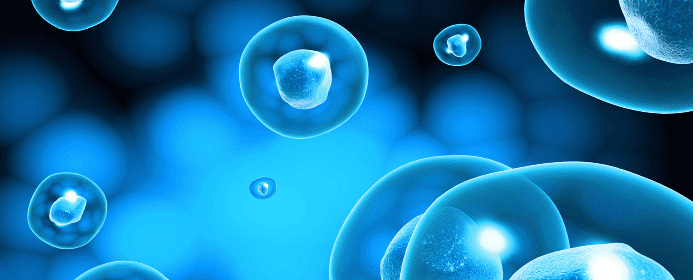
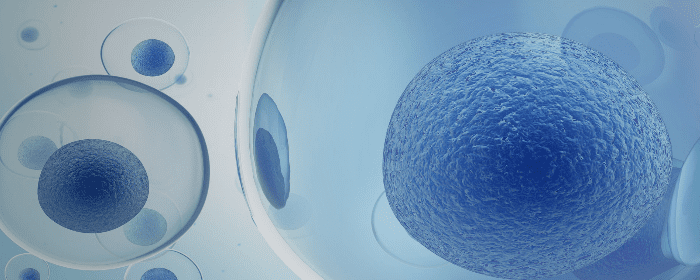
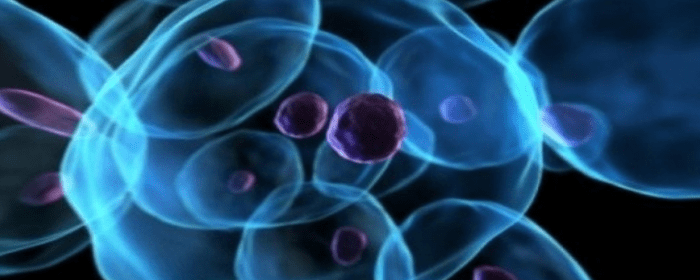
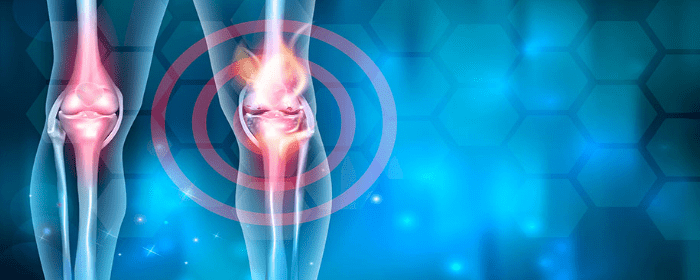
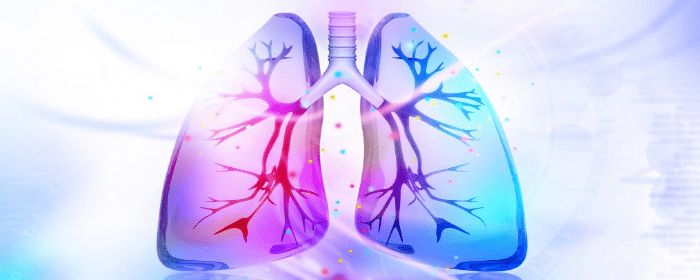
 St. Petersburg, Florida
St. Petersburg, Florida
